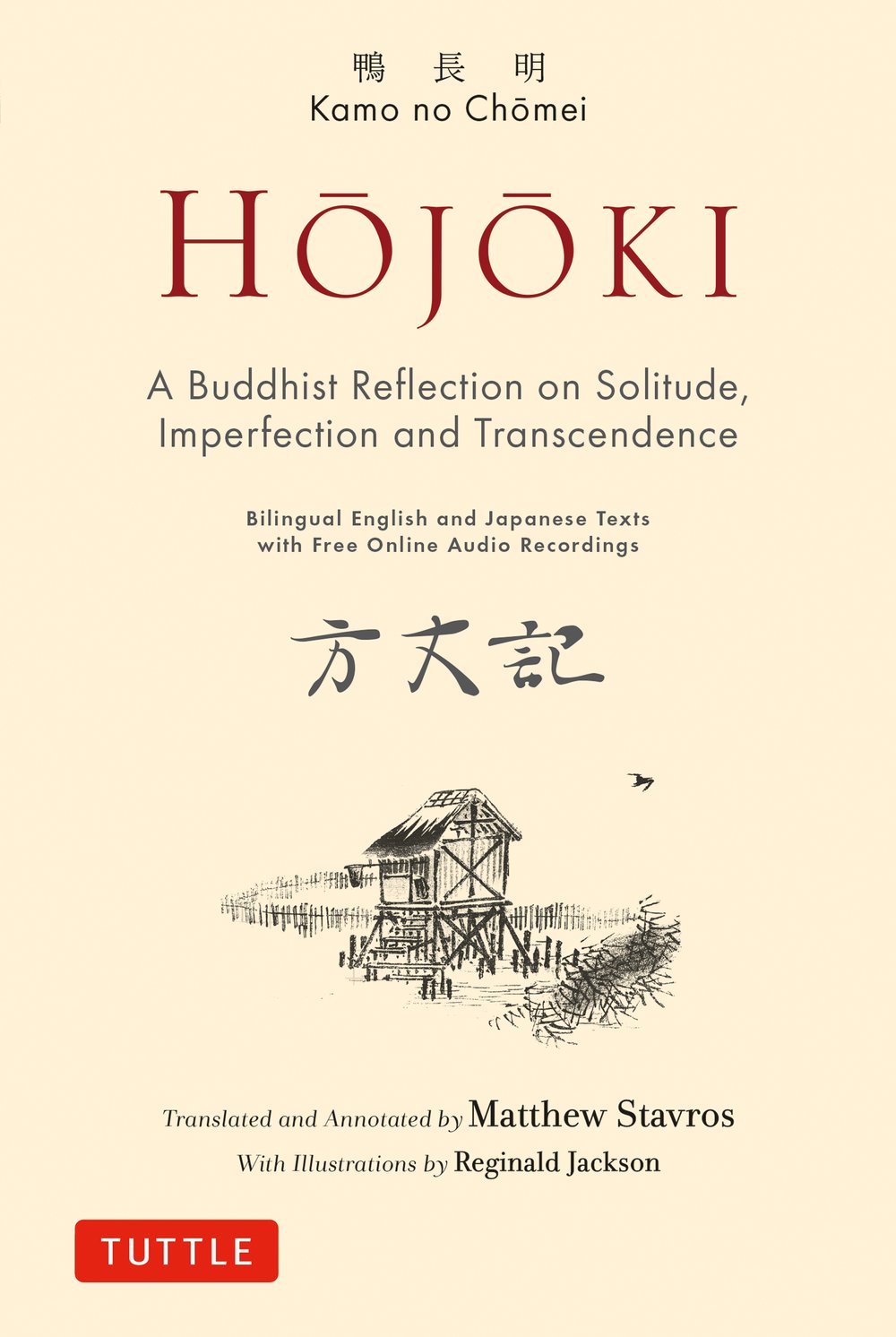Hojoki: A Buddhist Reflection on Solitude
Imperfection and Transcendence - Bilingual English and Japanese Texts with Free Online Audio Recordings

Discover the tranquil wisdom of Chomei's 13th-century masterpiece, Hojoki, as it unveils the beauty of imperfection and the serenity of a simple life amidst the chaos of existence.
Hojoki is an introspective poem written in the 13th century by the enigmatic Japanese hermit Kamo no Chomei, who as a young man served in the capital as official court poet but later in life withdrew from society.
Composed in a time of devastating fires, floods, earthquakes, droughts and famines, Chomei's masterpiece reflects on the impermanence of things, expressing life's mysterious beauty and the profound wisdom to be found in nature.
Chomei paints a vivid picture of the chaos and suffering of the human condition. Amidst this turmoil, he discovers an oasis of calm in a simple mountain hut, where he contemplates the virtues of nature and the wabi sabi beauty of imperfection in all things.
In their friends,
People like to find affluence and a ready smile.
Compassion and honesty,
Not so much.
So why not make friends with music and nature instead:
The moon; the flowers?
********
I know my needs,
And I know the world.
I want for nothing,
And do not labor to acquire things.
Quietude is all I desire:
To be free from worry is happiness enough.
This new translation by Matthew Stavros, presented alongside the original Classical Japanese, perfectly captures the profound serenity of Chomei's writings. His poignant verses serve as timely reminders that amidst the uncertainty of this world, true contentment can often be found in the simple life, in embracing fleeting moments, and in seeking solace in nature's beauty.

Kamo no Chomei was a Japanese poet, musician and essayist who died in 1216. While in his fifties, he became a recluse, moving to Mount Hiei outside Kyoto then to Hino, where he built a tiny hut and spent the rest of his life writing and contemplating.
Matthew Stavros is a historian of Japan at the University of Sydney and the former director of the Kyoto Consortium for Japanese Studies. He is the author of Kyoto: An Urban History of Japan's Premodern Capital (University of Hawaii Press, 2014) and numerous articles on Kyoto's architectural and urban history. His research focuses primarily on the material culture of premodern Japan and eastern Asia, with particular interest in cities, buildings, and religious monuments. He trained in architectural and urban history at Kyoto University and read history at Princeton University where he earned a Ph.D. He teaches modern and classical Japanese language, Japanese history and historiography, and more broadly on the histories and cultures of East and Southeast Asia.
Reginald Jackson is an artist and associate professor of pre-modern Japanese literature and performance at the University of Michigan. He is the author of Textures of Mourning: Calligraphy, Mortality, and the Tale of Genji Scrolls and A Proximate Remove: Queering Intimacy and Loss in The Tale of Genji.

